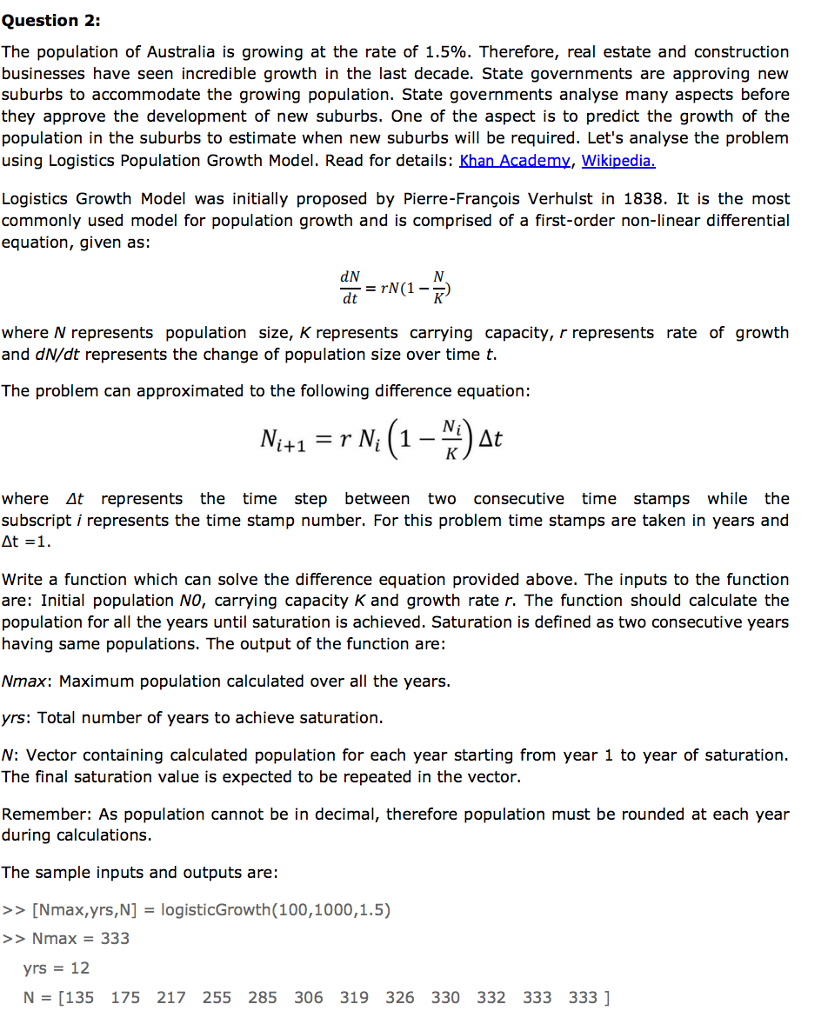
The population of Australia is growing at the rate of 1.5%. Therefore, real estate and construction businesses have seen incredible growth in the last decade. State governments are approving new suburbs to accommodate the growing population. State governments analyse many aspects before they approve the development of new suburbs. One of the aspect is to predict the growth of the population in the suburbs to estimate when new suburbs will be required. Let's analyse the problem using Logistics Population Growth Model. Read for details: Khan Academv, Wikipedia. Logistics Growth Model was initially proposed by Pierre-Francois Verhulst in 1838. It is the most commonly used model for population growth and is comprised of a first-order non-linear differential equation, given as: dN/dt = rN(1 - N/k) where N represents population size, K represents carrying capacity, r represents rate of growth and dN/dt represents the change of population size over time t. The problem can approximated to the following difference equation: N_i + 1 = r N_i (1 - N_i/k) Delta t where Delta t represents the time step between two consecutive time stamps while the subscript i represents the time stamp number. For this problem time stamps are taken in years and Delta t = 1. Write a function which can solve the difference equation provided above. The inputs to the function are: Initial population NO, carrying capacity K and growth rate r. The function should calculate the population for all the years until saturation is achieved. Saturation is defined as two consecutive years having same populations. The output of the function are: Nmax: Maximum population calculated over all the years yrs: Total number of years to achieve saturation. N: Vector containing calculated population for each year starting from year 1 to year of saturation The final saturation value is expected to be repeated in the vector. Remember: As population cannot be in decimal, therefore population must be rounded at each year during calculations. The sample inputs and outputs are: > > [Nmax, yrs, N] = logisticGrowth(100, 1000, 1.5) > > Nmax = 333 yrs = 12 N = [135 175 217 255 285 306 319 326 330 332 333 333]







